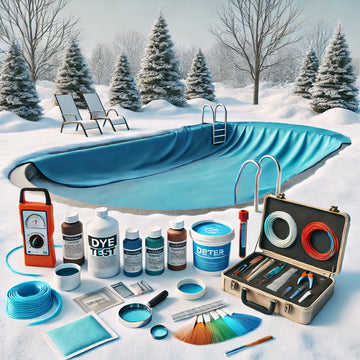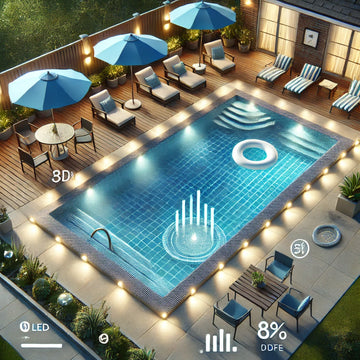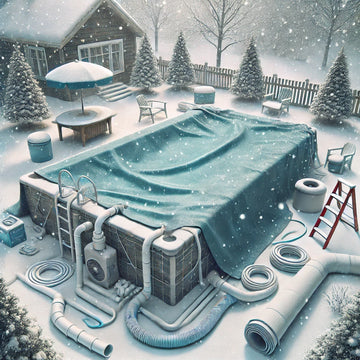PREPARE YOURSELF WITH OUR WINTER CHECKLIST FOR POOL LEAK DETECTION AND REPAIR
Pool leak detection and repair are much easier in the summer than during the winter months. But leaks during the winter can cause severe damage if ignored. When the water level drops, the pool cover, liner, deck, and the entire pool itself risk damage from the cold winter weather.
When the water level is low, the pool cover will no longer have the support of the water underneath. And when rain, ice, and snow buildup on top, the cover will sink down into the pool, causing damage to the cover’s hardware. Ice sheets will also form under the cover and if broken, will sink down and could tear the pool liner.
Furthermore, water leaking around the pool will freeze and expand, lifting up concrete and damage the surrounding pool deck. As more water empties from the pool, the pool’s liner will shrink and pucker, and the entire pool will be at risk of popping out of the ground due to hydrostatic pressure.
So, to avoid these costly outcomes of a leaking pool, keep an eye on your pool’s water level throughout the winter. And if you notice the water level dropping, use these pool leak detection and repair tips:
CHECK PUMP ON POOL COVER
Sometimes pumps on solid pool covers will pump water out of the pool through holes in the cover. To rule this out as a source of your pool leak, make sure the pump is not near any holes and fill the pool again with a hose. If the water level drops again, then the pump isn’t the cause.
CHECK WATERLINE
The level where the water stabilizes should help you find the location of the leak. Inspect the pool liner for any rips, holes, and areas where dirt and debris have gotten stuck—this is a good indicator of where the leak may be. You can also use a leak testing dye to see if the dye will be sucked out of any holes in the pool.
CHECK POOL LIGHTS
If the water level stabilizes around the same level as an underwater light, this could be the leak location. To repair, remove the light from the pool wall and pull it up on the deck. Place pool putty or light cord stoppers in the area where the light cord comes out of the light niche and through the conduit. Refill the pool and keep an eye out to see if the water level drops again.
CHECK GASKETS & FACEPLATES
For harder-to-find leaks, check areas in the pool where the liner has been purposely cut, such as the skimmer, returns, steps, and lights. Sometimes the gaskets and faceplates of these areas will develop leaks in the cold weather when the pool walls contract.
CHECK FOR CRACKS IN THE PLASTER
Lastly, if you cannot find leaks anywhere else, you may have a crack in the plaster. If you would rather wait until the spring to make this repair, make sure to keep filling your pool with water throughout the winter to avoid any more damage to the pool itself. A pool expert can help you decide when the ideal time is to repair the plaster.
Keep an eye on your pool this winter to avoid any damage from leaks. With these pool leak detection and repair tips, and the help from pool experts, you can keep your pool safe and in perfect condition all winter long.




